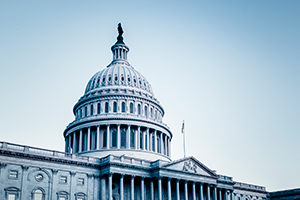EEOC Issues Proposed Updated Guidance on Workplace Harassment
 On September 28, 2023, the U.S. Equal Employment Opportunity Commission (EEOC) published new proposed guidance for employees and employers on navigating and preventing workplace harassment. “Enforced Guidance on Harassment in the Workplace” highlights and upholds existing federal employment discrimination laws and precedence, such as the Pregnant Workers Fairness Act (PWFA) and the Supreme Court’s Bostock v. Clayton County decision.
On September 28, 2023, the U.S. Equal Employment Opportunity Commission (EEOC) published new proposed guidance for employees and employers on navigating and preventing workplace harassment. “Enforced Guidance on Harassment in the Workplace” highlights and upholds existing federal employment discrimination laws and precedence, such as the Pregnant Workers Fairness Act (PWFA) and the Supreme Court’s Bostock v. Clayton County decision.
The Updated Guidance
The proposed enforcement guidance provides an overview and examples of situations that would constitute workplace harassment. Of particular interest are provisions included that reflect new and existing protections from harassment under federal laws and precedence, as well as emerging issues surrounding the workforce. The guidance discusses the following notable provisions for consideration:
- Pregnancy, childbirth and related medical conditions. The guidance states that sex-based harassment includes harassment revolving around pregnancy, childbirth or related medical conditions, all of which are protected under federal laws like the Pregnancy Discrimination Act and the recently enacted PWFA.
- Sexual orientation and gender identity. The guidance provides several examples of discrimination and harassment on the basis of sexual orientation and gender identity, which is considered sex-based discrimination under Title VII of the Civil Rights Act after the Supreme Court’s 2020 Bostock v. Clayton County decision.
- Virtual and online harassment. The guidance states that conduct within a virtual work environment can contribute to a hostile environment, providing examples such as harassing comments made during remote calls or discriminatory imagery being visible in an employee’s workspace while in a work-related video call. Additionally, the guidance provides examples of conduct on social media outside of work-related contexts that may contribute to hostile work environments if such conduct impacts the workplace.
In the proposed guidance, the EEOC reminds stakeholders that the final guidance will “not have the force and effect of law” and that such guidance is “not meant to bind the public in any way.” Instead, the document “is intended only to provide clarity to the public regarding existing requirements under the law or Commission policies.”
Looking Ahead
The proposed guidance is open for public comments through November 1, 2023. Once the comment period closes, the EEOC will review all feedback they received and make changes to address the comments prior to issuing a final rule. CUPA-HR will keep members apprised of any updates on this EEOC guidance, as well as new and existing laws falling under the EEOC’s jurisdiction.


